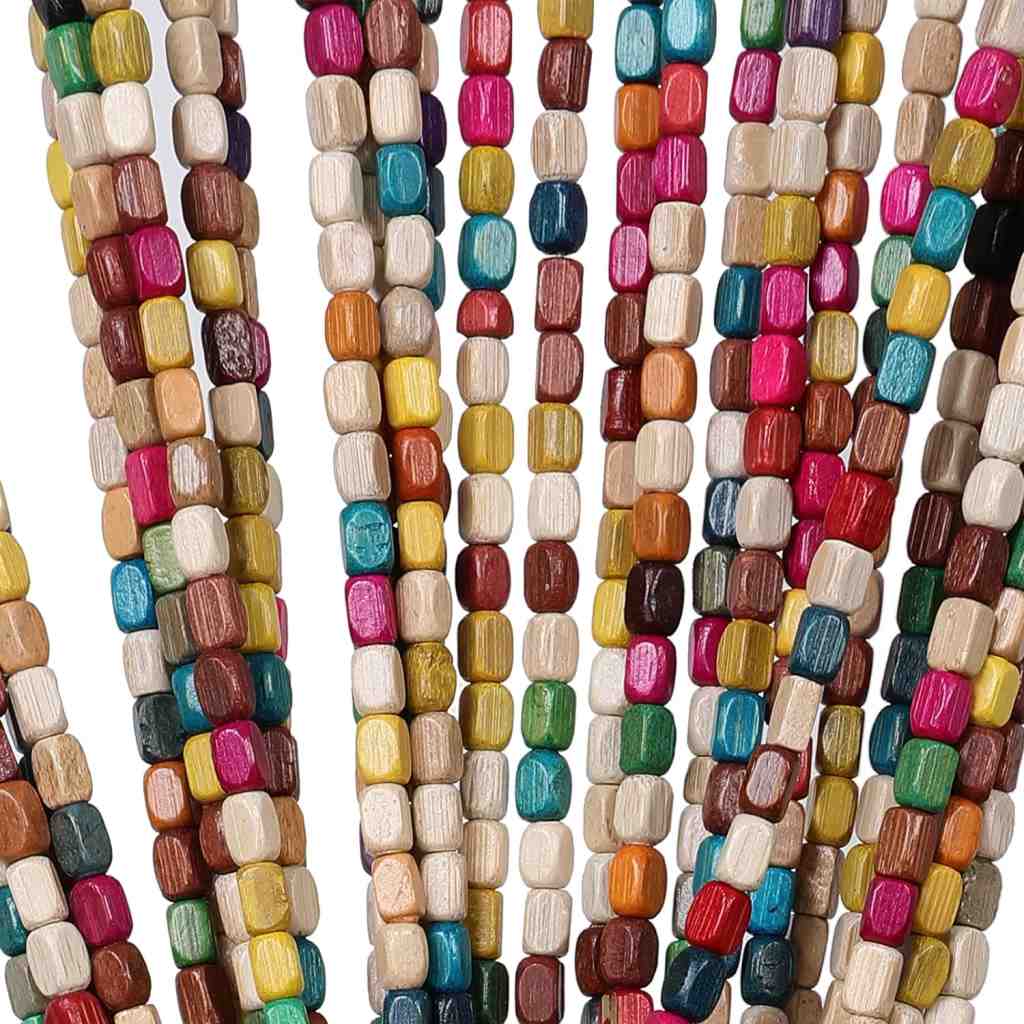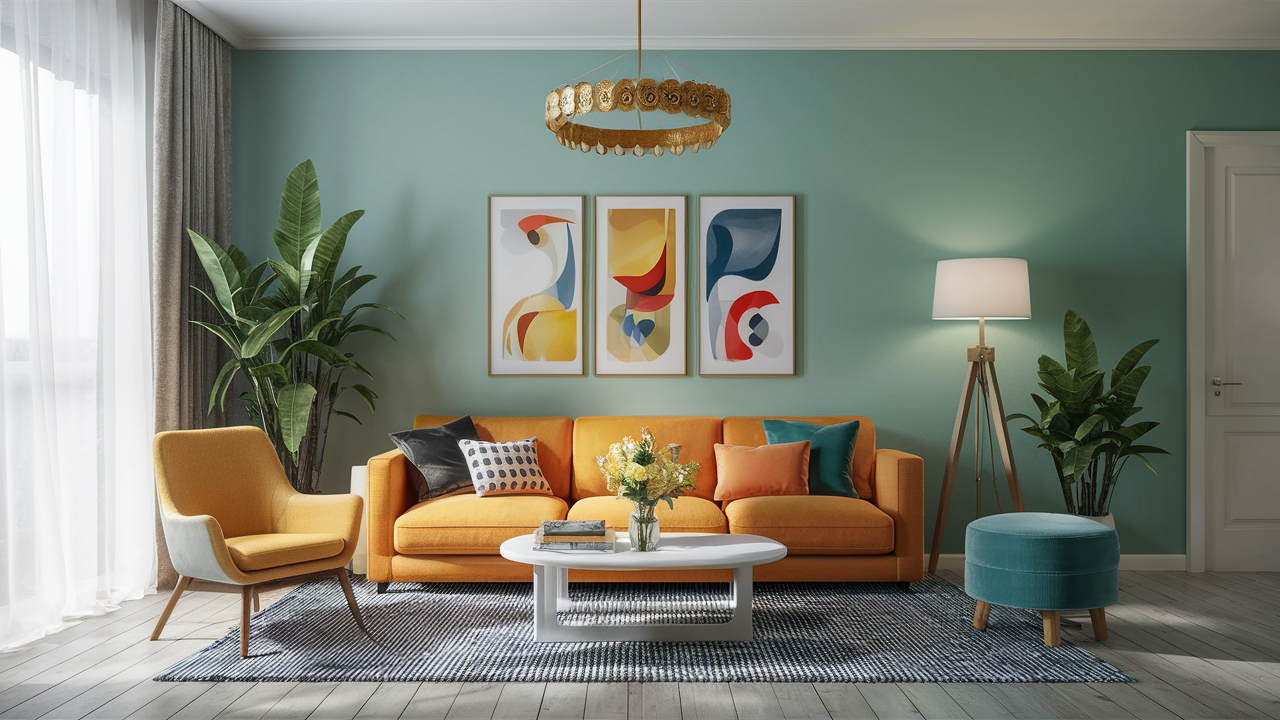If you’ve ever dreamed of stepping back in time to the days of bell-bottoms, disco balls, and lava lamps, then a 70s living room makeover is just what you need.
The retro 70s living room ideas were all about bold colors, funky patterns, and a unique blend of style and comfort. Whether you want to incorporate a few retro touches or go all out with a full-on 70s living room, here are some ideas to get you started.
Table of Contents
Toggle1. Embrace Bold Colors and Patterns

One of the hallmarks of 70s living room decor is the use of vibrant colors and bold patterns. Think avocado green, mustard yellow, and burnt orange. These colors might seem a bit daring, but when used correctly, they can create a warm and inviting atmosphere.
Start by choosing a dominant color for your living room. For example, you could paint the walls a soft avocado green and then accent with mustard yellow and burnt orange throw pillows, curtains, or rugs.
Don’t be afraid to mix and match patterns, either. Geometric shapes, floral prints, and paisley designs were all the rage in the 70s, and they can add a fun and funky vibe to your space.
2. Find the Perfect Vintage Furniture

70s living room is incomplete without some iconic vintage furniture. Look for pieces that have a mid-century modern vibe, such as low-slung sofas, egg chairs, and coffee tables with hairpin legs. These items are not only stylish but also incredibly comfortable, making them perfect for creating a cozy living room.
When shopping for vintage furniture, consider checking out local thrift stores, flea markets, and online marketplaces. You might be surprised at the treasures you can find. If you’re handy, you can even try your hand at upcycling old furniture to give it a fresh, 70s-inspired look.
3. Add Some Shag

Shag rugs and carpets are quintessential 70s living room staples. These fluffy, high-pile carpets come in a variety of colors and can instantly add a touch of retro charm to your space.
Opt for a shag rug in a bold color like orange or red to really make a statement, or choose a more neutral tone if you want a subtler look.
In addition to rugs, you can also incorporate shag pillows or throws. These add texture and warmth to your living room, making it feel even cozier and more inviting.
5 best simple and elegant dream house decor tips
4. Incorporate Wood Paneling

Wood paneling was a major trend in the 70s, and it can bring a touch of that era’s charm into your home. Consider adding wood paneling to one or more walls in your living room. If you’re not ready to commit to full walls of paneling, you can use it as an accent behind your sofa or TV.
If wood paneling feels too dark or dated, you can always paint it a lighter color to give it a more modern twist while still retaining that 70s vibe. White or light grey paneling can look fresh and contemporary while still nodding to the past.
5. Accessorize with Funky Decor

When it comes to 70s living room decor, the devil is in the details. Accessorize your space with items that have a retro flair. Lava lamps, beaded curtains, and macramé wall hangings are all great choices.
Houseplants were also incredibly popular in the 70s. Fill your living room with a variety of plants, from hanging spider plants to large potted ferns. Not only do they add a touch of greenery, but they also help purify the air and create a relaxing environment.
6. Lighting Matters

The right lighting can make all the difference in your 70s living room. Floor lamps with arc designs, pendant lights, and even chandeliers with a vintage feel can add the perfect touch.
Look for lighting fixtures with metallic finishes, such as brass or chrome, to enhance the retro aesthetic.
Consider adding some mood lighting with dimmable lamps or string lights. These can help create a cozy and inviting atmosphere, perfect for relaxing or entertaining guests.
7. Mix Old and New

While it’s fun to go all out with a 70s living room, you can also mix vintage pieces with modern elements to create a unique and eclectic space.
Pair a retro sofa with a contemporary coffee table, or mix vintage accessories with modern artwork. This approach allows you to enjoy the best of both worlds and create a living room that reflects your personal style.
6 Best Aesthetic Apartment Decor Tips, Spark Your Space
8. Create a Conversation Pit

A popular trend in the 70s was the conversation pit – a sunken seating area designed for socializing. While you might not want to start digging into your floor, you can recreate this cozy setup by arranging your seating in a circular or semi-circular layout.
Use a mix of sofas, armchairs, and floor cushions to create an inviting space for chatting with friends and family.
9. Bring in Some Art

Art plays a crucial role in 70s decor. Look for pieces that feature bold colors, abstract designs, or psychedelic patterns.
Posters of iconic 70s bands, retro movie posters, or even vintage album covers can add a fun and nostalgic touch. Frame these pieces and create a gallery wall to showcase your collection.
10. Don’t Forget the Details

Small details can make a big impact in your 70s living room. Consider swapping out your current light switches and outlet covers for vintage-inspired ones.
Add some retro-inspired textiles, such as crochet blankets or velvet pillows. Even small accessories like coasters, vases, and picture frames can contribute to the overall look and feel of your space.
Conclusion
Retro 70s living room ideas are all about embracing bold colors, funky patterns, and vintage charm. With the right mix of furniture, decor, and accessories, you can transform your living room into a groovy haven that’s both stylish and comfortable.
Whether you go all out with a full retro makeover or just incorporate a few 70s-inspired touches, you’re sure to create a space that’s uniquely yours and full of character. So, put on some disco tunes, and get ready to bring a little bit of the 70s back into your home.
Advicedoor.com is a participant in the Amazon Services LLC Associates Program, an affiliate advertising program designed to provide a means for sites to earn advertising fees by advertising and linking to Amazon.com. Amazon and the Amazon logo are trademarks of Amazon.com, Inc, or its affiliates.




